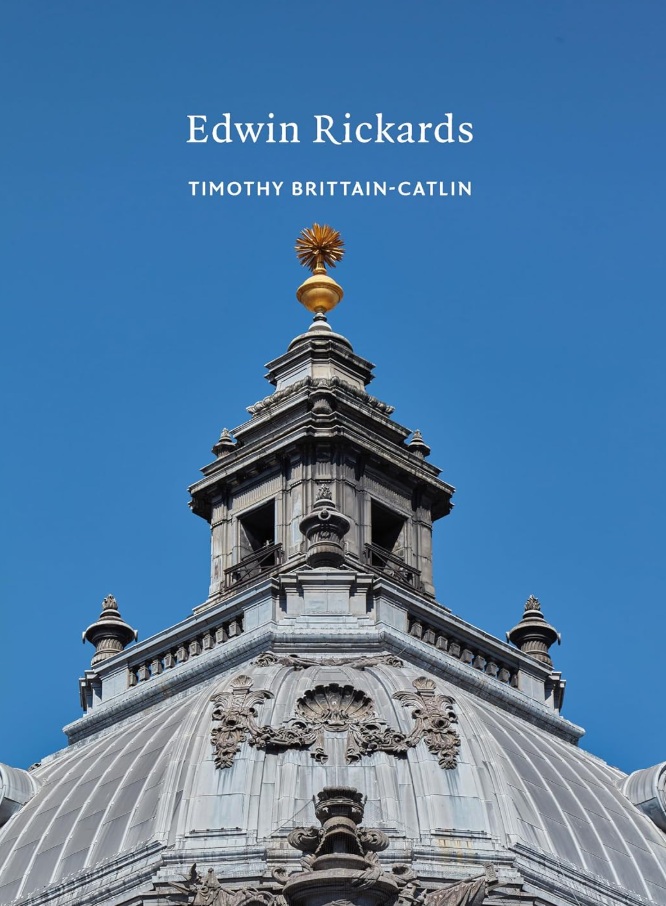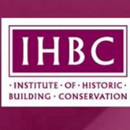Edwin Rickards

|
| Edwin Rickards, Timothy Brittain-Catlin, Liverpool University Press on behalf of Historic England, 2023, 156 pages, 81 colour and black-and-white illustrations, paperback. |
In this well-illustrated book (the latest in the Victorian Society’s invaluable series on Victorian and Edwardian architects), which includes many high-quality contemporary photographs of Rickards’ buildings, and reproductions of his architectural drawings, caricatures and accomplished watercolours, the author presents an engaging and lively review of Rickards’ professional life; and the book is enhanced by numerous references to his personal interests and friendships, notably his long and enduring one with the novelist, Arnold Bennett. This is made critical by the curious current absence of Rickards from the Oxford Dictionary of National Biography.
Born in London in 1872 to a lower-middle class background (his father ran a draper’s shop), Rickards showed from an early age remarkable skill in imaginative drawing. He harnessed this in his development as an architectural assistant, working for several practices while being admitted to the Architectural Association in 1890, where he later acted as a tutor and lecturer.
Brittain-Catlin suggests that ‘Rickards could have taken on any one of many different careers – including as a caricaturist or theatre designer – but he chose to be an architect above all else… transform(ing) himself… into a dandily dressed, charismatic figure who scarcely paused for breath (his passion for talking is said to have been inexhaustible and exhausting both for friends and others who met him) and who straddled both the demi-monde and the social and professional circles of leading Edwardian architects.’
Chapter 1 (‘Little Rickards’, an epithet given him by Charles Reilly who, despite a snobbish attitude to Rickards’ accent, was to become a life-long friend) provides the background to the formation of the partnership he was to enter in 1893 with James Stewart and HV Lanchester, primarily with the aim of entering architectural competitions. Lanchester was the senior of the three men (some nine years older than Rickards) and from a far wealthier background.
He was also more practical; the quotation Brittain-Catlin gives from J Warren’s contribution to Alastair Service’s pioneering 1975 study Edwardian Architecture and its Origins nicely illustrating the differences between him and Rickards. ‘In his enterprise and thorough understanding of structure and planning,’ Warren wrote, ‘Lanchester was fully a match for the indefatigable Rickards, whose Piranesian conceptions he had to tame, rationalise and build.’ This important contrast is nicely brought out by the author in his comparison of Lanchester and Rickards with other successful practices in the USA during this period. Certainly, it left Rickards free to express his more esoteric ideas and principles, influenced by what he had seen as a young man in Paris and Vienna, in his many superb drawings.
Chapter 2 (‘City of Palaces’) focuses on the partnership’s first major competition winner, Cardiff City Hall and Law Courts in Cathays Park (1897-1906). The author makes clear his regret that they did not win later competitions there, including that for the National Gallery and Museum of Wales. But he also includes a perceptive description and analysis of Deptford Town Hall (1902-5), ‘which although different in scale from the city hall at Cardiff, and on a tight site in a poor district of London, was again a kind of palace, which this time included a staircase that is one of the most powerful small spaces in English architecture.’
Hull School of Art, another jewel of a building, is an exact contemporary of Deptford Town Hall. It is described in both Chapter 3 (‘You never know your luck’), which provides a useful account of the vagaries and frustrations of Edwardian architectural competitions, and Chapter 4 (‘Material to the core’), which also includes an analysis of Lanchester and Rickards’ most colossal achievement, also won in competition, Methodist Central Hall, Westminster, built in 1905-12, and Rickards’ various designs for monuments, both executed and unexecuted.
The concluding chapter of the book (‘Big Rickards’) records Rickards’ volunteering (in his mid-40s) for military service in France and how this hastened his early death from illness, and it gives an account of his commission in 1918 for the unimplemented Canadian Imperial (War) Memorial in Ottawa.
This is a splendid book, with a comprehensive bibliography and a list of all Rickards’ executed works. The only minor quibble is the lack of plans of his larger buildings, which might have made the otherwise excellent descriptions of Cardiff City Hall and Law Courts and Methodist Central Hall, Westminster, slightly easier to follow.
This article originally appeared as ‘Piranesian conceptions’ in the Institute of Historic Building Conservation’s (IHBC’s) Context 181, published in September 2024. It was written by Nicholas Doggett, managing director of Asset Heritage Consulting, a heritage consultancy based in Oxford.
--Institute of Historic Building Conservation
Related articles on Designing Buildings Conservation.
- Conservation.
- Heritage.
- Historic environment.
- How architecture can suppress cultural identity.
- IHBC articles.
- IHBC launches climate change hub.
- Institute of Historic Building Conservation.
- Architect.
- Architectural styles.
- Unlocking the Church: the lost secrets of Victorian sacred space.
- The Victorian Society's Top 10 Endangered buildings 2019.
IHBC NewsBlog
Old Sarum fire in listed (& disputed) WW1 Hangar - Wiltshire Council has sought legal advice after fire engulfed a listed First World War hangar that was embroiled in a lengthy planning dispute.
UK Antarctic Heritage Trust launches ‘Virtual Visit’ website area
The Trust calls on people to 'Immerse yourself in our heritage – Making Antarctica Accessible'
Southend Council pledge to force Kursaal owners to maintain building
The Council has pledged to use ‘every tool in the toolbox’ if urgent repairs are not carried out.
HE’s Research Magazine publishes a major study of the heritage of England’s suburbs
The article traces the long evolution of an internal programme to research 200 years of suburban growth
IHBC Context 183 Wellbeing and Heritage published
The issue explores issues at the intersection of heritage and wellbeing.
SAVE celebrates 50 years of campaigning 1975-2025
SAVE Britain’s Heritage has announced events across the country to celebrate bringing new life to remarkable buildings.
IHBC Annual School 2025 - Shrewsbury 12-14 June
Themed Heritage in Context – Value: Plan: Change, join in-person or online.
200th Anniversary Celebration of the Modern Railway Planned
The Stockton & Darlington Railway opened on September 27, 1825.
Competence Framework Launched for Sustainability in the Built Environment
The Construction Industry Council (CIC) and the Edge have jointly published the framework.
Historic England Launches Wellbeing Strategy for Heritage
Whether through visiting, volunteering, learning or creative practice, engaging with heritage can strengthen confidence, resilience, hope and social connections.














